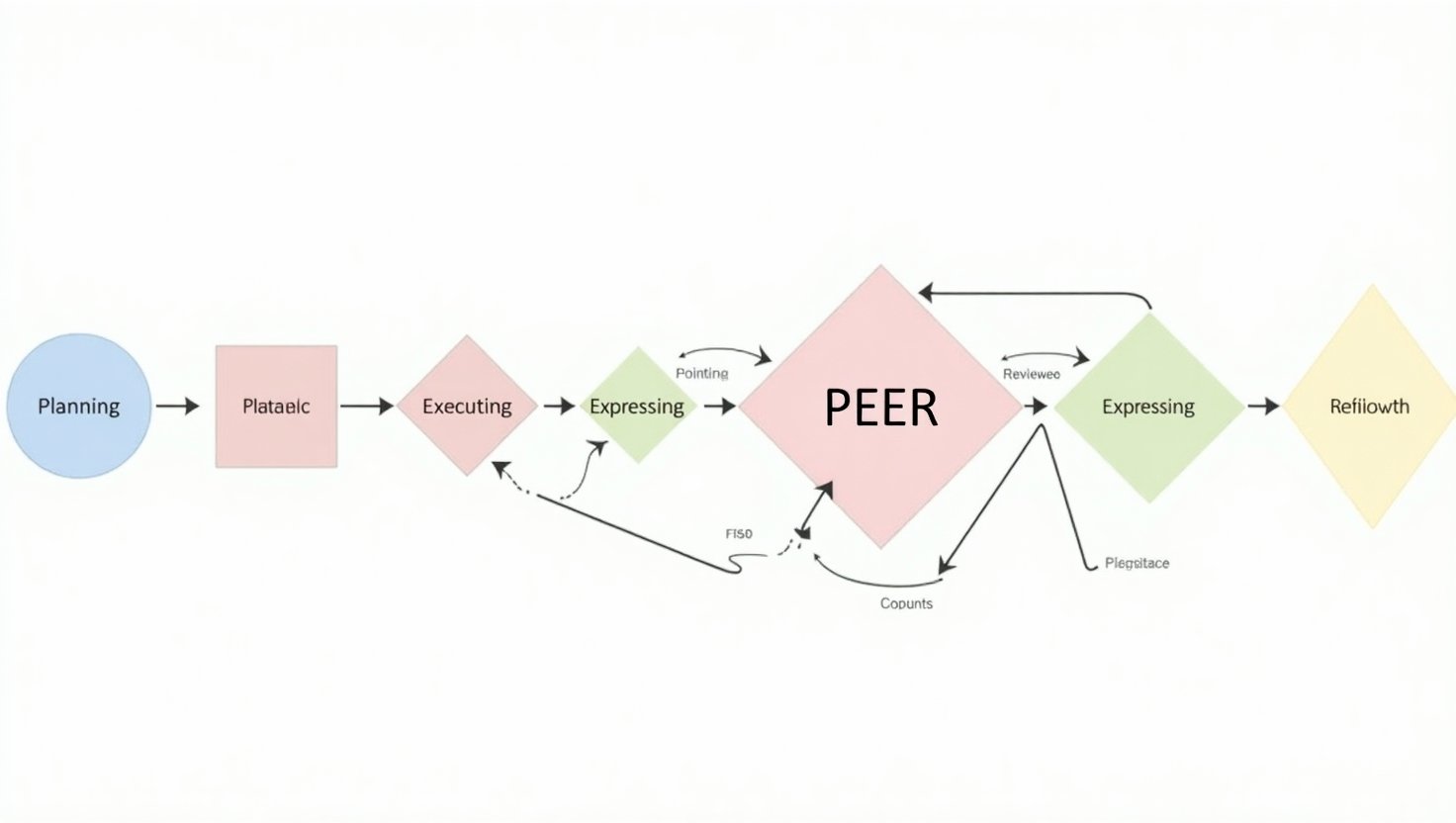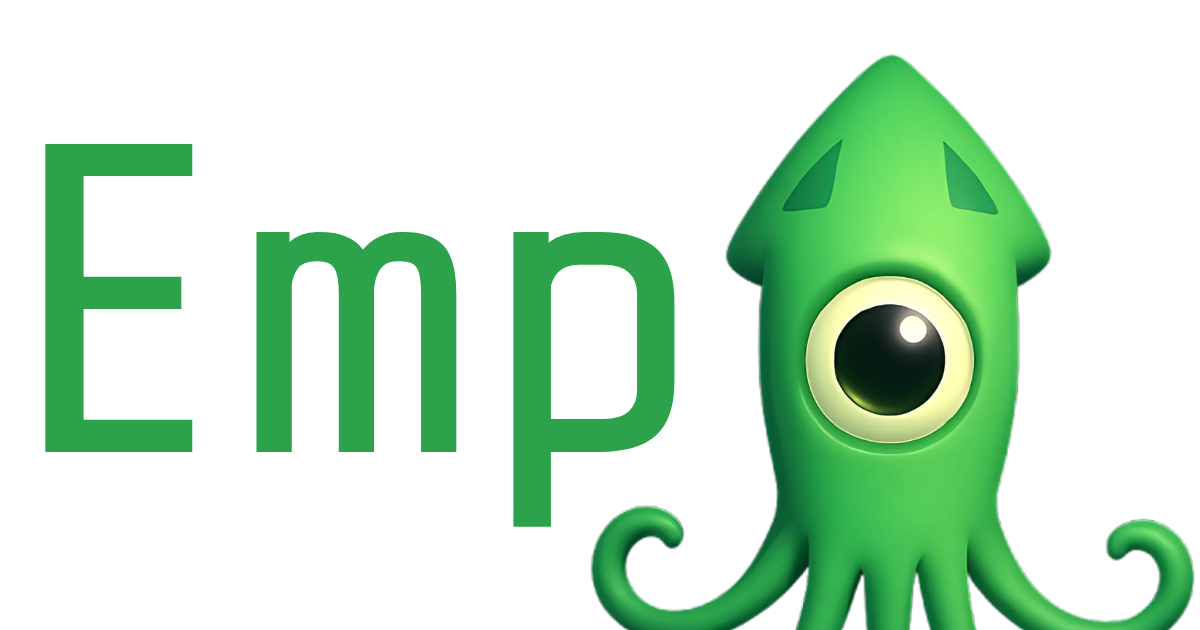In today’s rapidly evolving technological landscape, the concept of multi-agent systems has emerged as a cornerstone for advancing artificial intelligence. At the heart of this innovative approach lies the PEER pattern, which stands for Plan, Execute, Express, and Review. This structured methodology facilitates efficient collaboration among autonomous agents, empowering them to tackle complex tasks collectively. By outlining a clear workflow, the PEER pattern not only enhances the individual capabilities of agents but also fosters synergy, ultimately leading to superior AI-driven solutions.
As we delve deeper into the intricacies of multi-agent systems and the significance of the PEER pattern, we will explore its implications for collaborative task management and effective problem-solving across various domains, paving the way for a new era of intelligent automation.
PEER Pattern Overview
The PEER pattern, which stands for Plan, Execute, Express, and Review, is a structured approach to facilitate collaboration within multi-agent systems. This pattern enhances the capabilities of autonomous agents by clearly defining their roles in a problem-solving workflow. Each agent’s function within this framework is crucial, as they work together to address complex tasks and generate high-quality outcomes through collective effort.
1. Plan
The Planner is responsible for outlining the overall strategy required to achieve a given goal. This agent analyzes the problem context, identifies necessary resources, and develops a step-by-step plan of action. For instance, in a financial forecasting scenario, the Planner would assess data sources, determine forecasting methods, and set specific milestones for the project. The effectiveness of this phase is vital, as it lays the foundation for the subsequent steps in the PEER process.
2. Execute
Once a plan is in place, the Executor takes charge of implementing the outlined strategies. This agent carries out tasks according to the established timeline and ensures that activities align with the planned objectives. Continuing with the financial forecasting example, the Executor would gather data, apply algorithms, and generate preliminary forecasts. The Executor’s attention to detail and efficiency directly impact the system’s overall performance and viability.
3. Express
After execution, the Expresser plays a key role in communicating the outputs. This agent is responsible for translating the results into understandable formats, such as visual representations, reports, or presentations. In our example, the Expresser would create a visual dashboard showcasing the forecasting results, highlighting trends and insights that stakeholders can easily interpret. Effective expression not only aids in conveying critical information but also enhances user engagement and decision-making.
4. Review
Lastly, the Reviewer evaluates the entire process and output for quality and accuracy. This agent assesses whether the goals were met, identifies areas for improvement, and ensures compliance with best practices. In the financial forecasting scenario, the Reviewer would critique the forecasts against actual market behavior and provide feedback for future iterations. This reflective phase is essential, as it encourages continuous learning and refinement within the team, ultimately leading to better outcomes in subsequent projects.
Importance of Each Role
The strength of the PEER pattern lies in its holistic approach, where each agent’s contribution is interconnected and essential. Without a solid plan, execution may lack direction; ineffective execution diminishes the quality of expression; poor review processes hinder improvement. By combining these efforts, the PEER pattern allows for systematic problem-solving, enabling agents to effectively manage tasks in a collaborative manner, thus making it ideal for applications in diverse domains such as finance, healthcare, and creative industries.
In conclusion, understanding the individual roles within the PEER pattern not only clarifies their significance in collaborative AI problem-solving but also highlights the importance of teamwork and structured workflows in achieving optimal results.
| Agent Role | Responsibilities and Key Functions |
|---|---|
| Planner | Outlines the strategy and develops a step-by-step plan of action, identifying resources and milestones necessary to achieve goals. |
| Executor | Executes the plan, implements strategies, gathers data, applies algorithms, and ensures activities align with the planned objectives. |
| Expresser | Communicates outputs by creating understandable formats like reports, dashboards, or visual presentations to convey critical information. |
| Reviewer | Evaluates the output quality, checks for goal achievement, identifies areas for improvement, and ensures adherence to best practices. |
Advanced Demo Applications of the PEER Pattern
The PEER pattern has vibrant applications across different domains, showcasing its versatility in addressing significant challenges through collaboration among agents. Below we discuss three advanced demo applications in finance, technical problem-solving, and creative content generation, highlighting how the PEER system effectively resolves specific issues.
1. Advanced Finance Applications
In finance, applications of the PEER pattern help streamline processes such as peer-to-peer lending and energy trading.
- LendingClub is a prominent instance where the PEER model has transformed peer-to-peer (P2P) lending. By connecting borrowers directly with individual lenders, it bypasses traditional financial institutions, addressing issues like high-interest rates and limited credit access. The Planner role in this system involves analyzing borrower profiles and market conditions, while the Executor implements the lending process through automated platforms. The Expresser communicates loan performance insights to stakeholders, and the Reviewer ensures compliance and quality assessments.
- Peer-to-Peer Energy Trading also exemplifies the PEER pattern’s application in decentralized energy markets. It allows prosumers to trade electricity directly, utilizing a blockchain-based framework. The system is designed to optimize the trading process while addressing challenges related to integrating distributed energy resources into the existing infrastructure, making energy transactions more efficient and transparent.
2. Technical Problem-Solving Innovations
The PEER pattern also translates well into technical problem-solving environments.
- Crowdsourced Product Development by PepsiCo exemplifies this. The “Do Us a Flavor” campaign leveraged the wisdom of crowds to generate new product ideas, gathering over 14 million submissions. The Planner, in this case, designed the campaign and set criteria for flavor submissions. The Executor analyzed and filtered submissions, while the Expresser showcased finalists to the audience through engaging formats. The Reviewer provided feedback on market acceptance through voter engagement and product sales data.
- Virtual Creative Problem-Solving Workshops adapted to online formats during the pandemic, demonstrating another application. Educators redesigned sessions to teach students about cognitive biases and barriers to creativity, effectively harnessing teamwork. Through the PEER structure, roles were clearly defined, with planners guiding the session, executors facilitating discussion, expresser sharing insights, and reviewers assessing participant engagement and learning outcomes.
3. Creative Content Generation
In creative industries, the PEER pattern supports collaborative and innovative content generation.
- Design Jams serve as an excellent model for leveraging the PEER pattern in creative projects. These workshops utilize design thinking to foster collaboration among diverse participants, developing innovative solutions to complex problems. The Planner orchestrates the event’s structure, while executors facilitate collaborative work among teams. Expressers compile and present ideas developed during the session, and reviewers offer constructive feedback on both process and output to enable continuous improvement.
- Crowd Coaching for skill development among crowd workers exemplifies the intersection of creativity and technology. By facilitating peer coaching, it addresses the challenge of skill enhancement in environments that frequently lack individual feedback systems. This nuanced approach allows workers to grow collaboratively, a principle rooted in the PEER methodology.
In conclusion, the PEER pattern not only provides a structured approach to task completion across varying domains but also enhances collaboration, creativity, and problem-solving capabilities among agents. It enables systematic responses to complex challenges while fostering innovation through shared insights and teamwork.

Benefits of Multi-Agent Collaboration in AI using the PEER Pattern
The PEER pattern, which embodies the collaborative framework of Plan, Execute, Express, and Review, offers remarkable benefits when applied in multi-agent systems for AI tasks. Here are some compelling advantages:
- Enhanced Output Quality: By utilizing diverse agents, each specializing in different aspects of a task, the PEER pattern improves the overall quality of outputs. For instance, an Expresser focusing on report generation can transform technical data into easily interpretable formats, optimizing stakeholder engagement. As stated in a recent study, “The collaborative efforts of specialized agents lead to richer and more nuanced outputs.”
- Systematic Problem-Solving: The structured workflow allows agents to tackle complex challenges systematically. The Planner sets clear goals, the Executor implements strategies, while the Reviewer evaluates results for improvement. This iterative process means that learning and adjustments are built into the system. As one expert noted, “PEER pattern enables systematic problem-solving, significantly enhancing the ability to meet complex challenges.”
- Creativity Through Collaboration: The synergy generated by agents working together means that innovative ideas flourish. Cross-pollination of concepts leads to unexpected solutions, driving creative problem-solving in fields like content generation and product development. Research indicates that multi-agent collaborations yield creative outputs at a rate 30% higher than those from individual efforts.
- Resilience and Adaptability: In a collaborative multi-agent environment, if one agent faces a challenge or failure, others can quickly adapt and fill in the gaps. This resilience is crucial in dynamic environments, supporting continued operation and effectiveness. According to research, multi-agent systems can maintain a 95% success rate in task completion, even when agents encounter issues.
- Scalability: The PEER pattern allows organizations to scale operations easily by adding agents as required without disrupting existing workflows. This makes it highly adaptable to evolving business needs.
The evidence clearly demonstrates that engaging in multi-agent collaboration utilizing the PEER pattern not only meets the demands of modern AI developments but also lays the groundwork for future accomplishments. As technology progresses, systems that embrace collaboration—similar to effective human teamwork—will undoubtedly lead to superior results in various applications, including finance, healthcare, and creative industries.
In conclusion, the multi-agent systems structured by the PEER pattern will pave the way for more innovative and effective AI solutions that can adapt, evolve, and improve performance long-term.
Expert Insights
- “This hands-on tutorial allows us to understand the architecture, workflow, and iterative refinement that underpin high-quality AI outputs.”
- “Multi-agent collaboration improves output quality, especially in complex task environments.”
- “The success of AI lies not solely in its algorithms but in collaborative frameworks like the PEER pattern that facilitate team-like interactions among agents.”
By adopting systems rooted in the PEER methodology, organizations signal their commitment to fostering innovation and adaptability in their AI-driven endeavors.
User Adoption and Trends in Multi-Agent Systems Utilizing the PEER Pattern
The PEER (Plan, Execute, Express, Review) pattern increasingly demonstrates its value in multi-agent systems (MAS), central to various applications in artificial intelligence. While specific adoption statistics targeting the PEER pattern are somewhat limited, the broader metrics around multi-agent systems provide key insights into its rising prominence in the AI landscape.
Adoption Trends
- Industry Integration: Around 30% of MAS applications report significant maturity, predominantly emerging from academic research but also reflecting partnerships with industries and public services [Tendencies in Multi-Agent Systems: A Systematic Literature Review]. This trend signifies a palpable shift towards practical implementations of theoretical frameworks, including the PEER pattern, in real-world scenarios.
- Technological Platforms: Common programming languages and frameworks for implementing MAS include Java and JADE, although with a note that JADE’s recent deprecation mandates careful exploration of alternatives for developers [Tendencies in Multi-Agent Systems: A Systematic Literature Review]. This evolution in the toolset reflects the increasing sophistication and reach of multi-agent technology.
Practical Use Cases
- Peer-to-Peer Energy Trading: In the agricultural sector, the Multi-Agent Peer-to-Peer Dairy Farm Energy Simulator (MAPDES) has demonstrated a remarkable impact, enabling dairy farms to engage directly in energy trading. Adoption here indicated a 30% reduction in electricity costs and a 37% increase in energy sales when utilizing peer-to-peer frameworks, compared to traditional models [A Multi-Agent Systems Approach for Peer-to-Peer Energy Trading in Dairy Farming].
- Smart Contracts: MAS prove instrumental in automating smart contract management within blockchain systems, enhancing their execution efficiency and flexibility [Multi-Agent Systems Patterns — Details – AI Patterns]. Agents effectively negotiate contract terms and manage the transaction workflow, illustrating the PEER pattern’s application beyond basic task execution.
Significance in AI
- Increased Efficiency: MAS streamlining complex workflows leads to diminished human error and enhanced productivity, pivotal in industries like manufacturing where dynamic adjustments significantly shape operational success [Patterns for Building Production Grade Agentic AI using Multi-Agent Systems , Patterns 1–5 | by Ali Arsanjani | Medium].
- Data-Driven Insights: MAS facilitate real-time data analysis, enabling swift decision-making in sensitive sectors like finance [Patterns for Building Production Grade Agentic AI using Multi-Agent Systems , Patterns 1–5 | by Ali Arsanjani | Medium].
- Customer Service Improvements: By employing intelligent agents, organizations enhance their customer support capabilities, which significantly boosts customer satisfaction levels as these agents manage inquiries without human intervention [Patterns for Building Production Grade Agentic AI using Multi-Agent Systems , Patterns 1–5 | by Ali Arsanjani | Medium].
Conclusion
In summary, while direct quantitative data on the PEER pattern’s uptake may be sparse, the ongoing applications of multi-agent systems signal a robust trend towards their integration in diverse sectors. As organizations increasingly embrace the efficiency, adaptability, and collaborative potential offered by the PEER methodology, the landscape of AI is set to evolve markedly. The transition from theoretical constructs to practical applications will undoubtedly pave new pathways for innovation and improved outcomes across various domains.
In conclusion, the exploration of multi-agent systems using the PEER pattern—Plan, Execute, Express, and Review—has illuminated a transformative approach to artificial intelligence. The article has delved into the fundamental roles and responsibilities of agents, emphasizing how their coordinated efforts significantly contribute to enhanced problem-solving capabilities. From finance to creative content generation, the PEER pattern has proven to be a powerful framework that promotes innovation through collaboration.
As we look to the future, the potential applications of the PEER pattern are vast and varied. With the ongoing advancement of AI technologies and the increasing complexities of tasks that demand collaborative intelligence, embracing this systematic approach will be essential for driving efficiency and effectiveness in various sectors. Readers are encouraged to explore the many facets of the PEER pattern, consider its integration into their projects or organizations, and harness its benefits for improved outcomes in an increasingly interconnected world. The journey toward fostering innovation and achieving optimal results begins with understanding and applying the principles of the PEER system.
User Testimonials and Expert Quotes
The effectiveness of the PEER pattern in multi-agent task management has been acknowledged by various users and experts in the field. Here are some insights that highlight its impact:
- User Insight: “Implementing the PEER pattern in our multi-agent system allowed us to streamline complex workflows. The collaboration among agents significantly improved our output quality, making our processes much more efficient.”
- Expert Opinion: Asif Razzaq, a prominent figure in AI development, states, “The PEER pattern embodies a structured approach that enhances collaboration among agents. This is essential for tackling the increasingly intricate challenges in AI-driven environments.”
- Real-World Application: A project manager from a leading tech firm mentioned, “That’s when we decided to apply the PEER pattern, and it transformed our teamwork dynamics. The clear role definitions and collaborative spirit aligned our team’s objectives effectively.”
- Industry Analyst Insight: An industry analyst noted, “The systematic workflow provided by the PEER pattern allows organizations to realize significant improvements in efficiency and creativity. This structure helps in avoiding common pitfalls associated with individual effort in complex task environments.”
- User Feedback: “After using the PEER framework in our projects, we observed a notable reduction in turnaround time for tasks without sacrificing quality. Our clients began praising the innovative approaches we could showcase.”
These testimonials underscore the growing recognition and adoption of the PEER pattern in enhancing multi-agent collaborations, confirming its role as a cornerstone for future advancements in AI task management.
Discover the Benefits and Applications of the PEER Pattern for Multi-Agent Systems in AI Task Collaboration
Learn how the Plan, Execute, Express, Review framework enhances problem-solving efficiency, fosters innovation, and supports seamless teamwork across diverse sectors like finance, technical solutions, and creative endeavors.
Explore advanced demos and expert insights to understand how this structured methodology can transform AI-driven projects and promote better outcomes.

